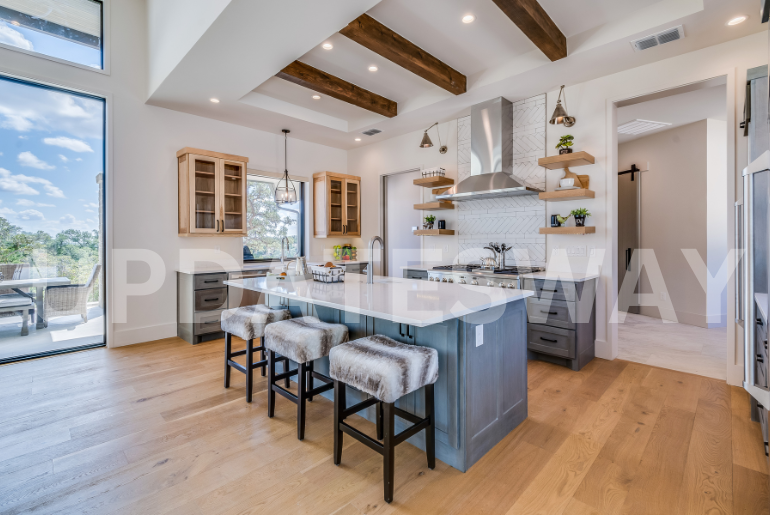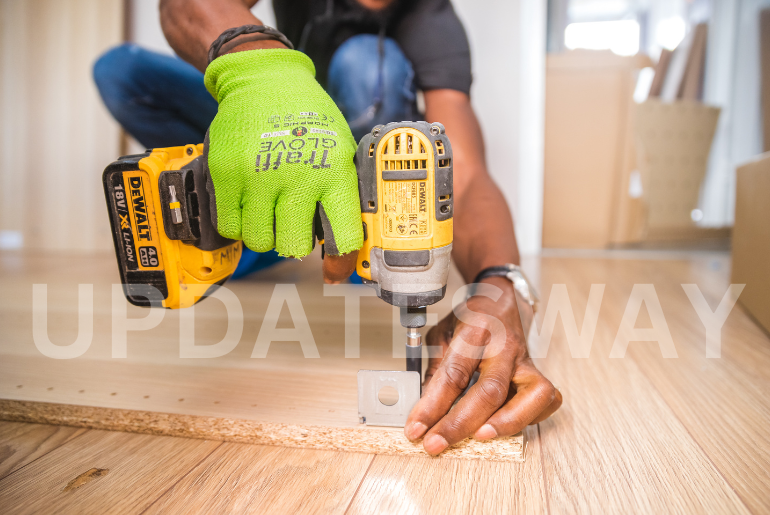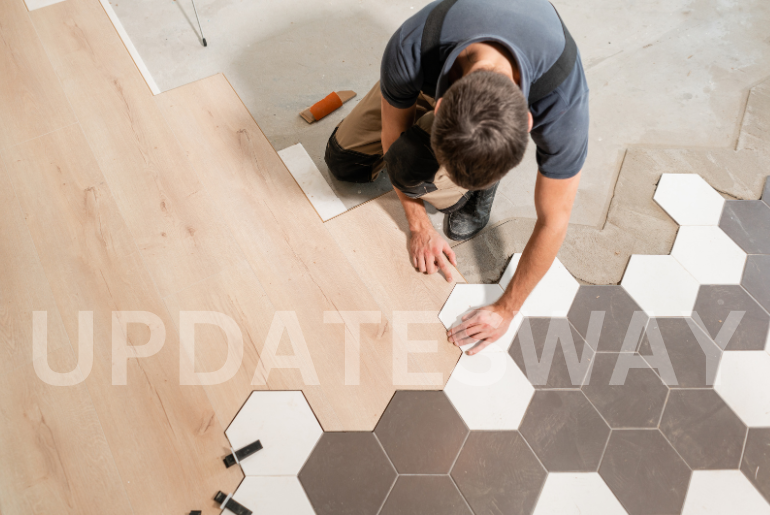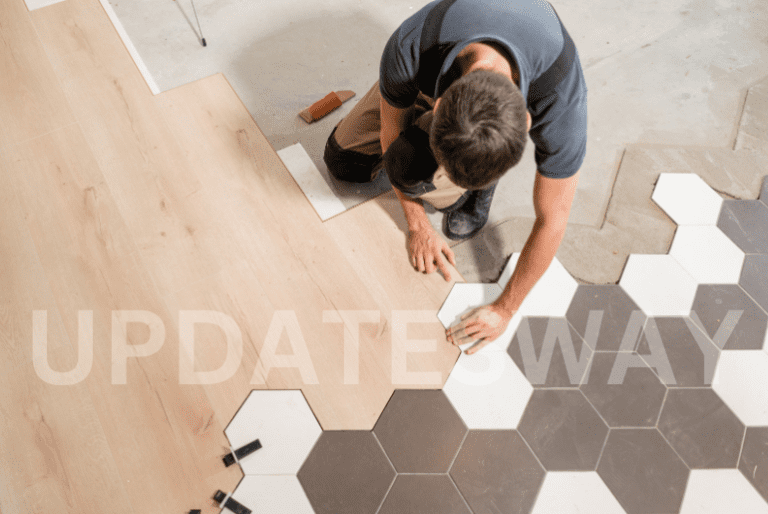When it comes to interior design, one of the essential aspects of a well-designed home is the transition between different types of flooring. A seamless transition from kitchen tiles to wood floors can significantly enhance the overall aesthetic appeal of your living space. In this article, we will explore some creative and unique kitchen tile to wood floor transition ideas that will not only bridge the gap between these two materials but also elevate the look of your home.

Understanding the Importance of Transitions
Before we delve into specific ideas, we must grasp the significance of smooth transitions in a home’s design. Transitions between different flooring materials are pivotal in maintaining a cohesive flow throughout your space. Whether transitioning from ceramic tiles to hardwood flooring or any other combination, getting it right can make a significant difference.
Using Wood Transition Strips

Wood transition strips are an excellent way to achieve a polished look when transitioning from kitchen tiles to wood floors. These strips come in various finishes and sizes, allowing you to find the perfect match for your decor. Additionally, they provide a smooth surface for walking while serving as a visual divider between the two flooring types.
Mosaic Tile Inlays

Introducing mosaic tile inlays is another fantastic option to create a seamless transition. You can strategically place mosaic tiles at the junction of the kitchen tiles and wood flooring, forming a beautiful pattern that smoothly blends the two materials. Mosaic tile inlays add an artistic touch to your floors, making them a focal point of admiration.
Metal Transition Strips
For a more contemporary look, consider using metal transition strips. These strips offer a modern and sleek appearance while effectively connecting the kitchen tiles and wood floors. They are durable, low-maintenance, and have various metallic finishes to complement your home’s style.
Unique Floor Patterns

Think beyond conventional designs and explore unique floor patterns to effortlessly merge kitchen tiles and wood floors. Whether it’s herringbone, chevron, or any other innovative pattern, incorporating such designs can add a touch of elegance to your space.
8 Unique and Interesting Wood Floor Patterns
Choosing Complementary Tile and Wood Colors

Carefully select tile and wood colors that complement each other. Harmonizing the hues will ensure a visually appealing transition and create a sense of continuity throughout the space.
Creating a Focal Point
Instead of treating the transition as a mere junction, why not turn it into a focal point? You can achieve this by using a contrasting tile design or a wood floor with intricate details that draw attention to the transition area.
Gradual Blend of Tile to Wood
A gradual blend from tile to wood can create a soft and graceful transition. This method involves using smaller tiles near the transition area and progressively increasing the size as you move toward the wood flooring.
Incorporating Natural Elements
Bring the outdoors inside by incorporating natural elements into your transition design. For instance, using stone or pebble tiles can add a touch of nature’s beauty to the junction between kitchen tiles and wood floors.
Transition Piece with Decorative Elements
Consider using a transition piece with decorative elements like intricate carvings or patterns. It is a transition aid and becomes an eye-catching element within your flooring design.
Types of Flooring in Different Areas
In some homes, different areas require specific types of flooring. In such cases, finding creative ways to transition between them is essential.
Consistency in Flooring Height
Maintaining consistency in flooring height is vital for a smooth transition. If the kitchen tiles and wood flooring have varying thicknesses, transition strips can help level the transition area.
opt for Professional Installation
While DIY projects can be fun, a seamless transition from kitchen tiles to wood floors often requires professional expertise. Hiring a skilled installer will ensure precision and finesse in the outcome.
Regular Maintenance and Cleaning
To keep your kitchen tile-to-wood floor transition looking impeccable, follow a regular maintenance and cleaning routine. Different materials may require specific care, so use the appropriate cleaning products and methods.
Conclusion
In conclusion, a well-executed kitchen tile-to-wood floor transition can significantly enhance your home’s aesthetics. Whether you opt for wood transition strips, mosaic tile inlays, or creative floor patterns, the key is seamlessly blending the two materials. Embrace your creativity, consider the overall interior design, and don’t hesitate to seek professional help to bring your vision to life.
FAQs For Kitchen Tile to Wood Floor Transition Ideas

Can I install wood transition strips myself?
Yes, homeowners with basic DIY skills can install wood transition strips. However, professional assistance is recommended for a more precise and seamless installation.
Are metal transition strips durable?
Yes, metal transition strips are durable and can withstand heavy foot traffic. They are an excellent option for areas prone to high usage.
What type of wood flooring works best for kitchen transitions?
Engineered hardwood flooring is often the best choice for kitchen transitions due to its stability and resistance to moisture.
How often should I clean the transition area?
It’s best to clean the transition area regularly, at least once a week, to maintain its appearance and prevent the buildup of dirt and debris.
Can I use different tile sizes for the gradual blend transition?
Using various tile sizes for the gradual blend transition can add a unique touch to your flooring design.
In conclusion, these Wood Floor Transition Ideas offer myriad possibilities to elevate your living space’s aesthetics and functionality. Each idea brings charm to the transition process, from using wood transition strips and mosaic tile inlays to exploring unique floor patterns and incorporating natural elements. Remember to choose complementary colors, maintain flooring height consistency, and consider seeking professional installation for a flawless finish.
By paying attention to the details and embracing creativity, you can seamlessly blend kitchen tiles and wood floors, creating a harmonious flow throughout your home. Whether you prefer a modern and sleek transition or a more rustic and natural look, these ideas provide a wealth of inspiration to help you achieve your desired result.
So, embark on your flooring journey with these Wood Floor Transition Ideas in mind. Transform how your home looks and feels with these innovative approaches to connecting different flooring materials. Embrace the beauty of transitions, and let your creativity shine as you design a space that truly reflects your unique style and personality.


0 Comments